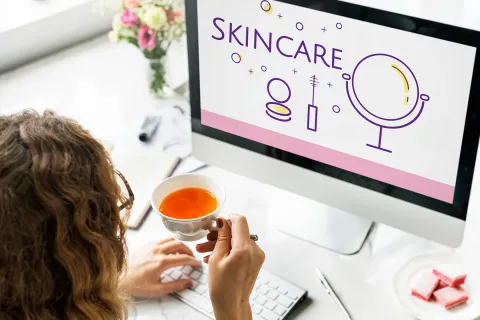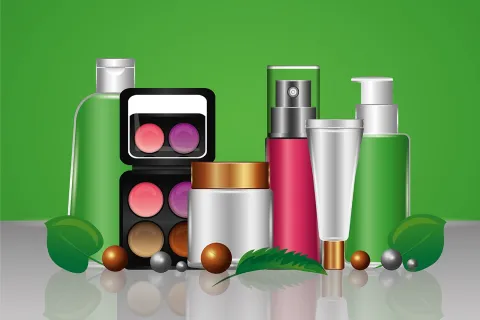
If you are in the cosmetics industry, you know that navigating the Regulatory landscape can be challenging. Not only are there numerous regulations to follow, but there are also countless acronyms to learn. To help you better understand the world of cosmetic regulations, Freyr has put together a list of the most common acronyms you are likely to encounter while working in this industry. Provided below is a comprehensive list of the acronyms.
US FDA - The United States Food and Drug Administration is the agency responsible for regulating cosmetics in the United States (US). The FDA/US FDA sets safety and labeling requirements for cosmetics sold across the US.
EU – The European Union is a political and economic union of twenty-seven (27) member states that are located in Europe. The EU has its own set of regulations that cosmetics sold in the member countries must comply with.
ACD: The ASEAN Cosmetic Directive (ACD) is an agreement among ASEAN countries to harmonise requirements of cosmetic products so as to reduce technical barriers to trade in the region. The ACD was implemented in Singapore from 1 January 2008.GMP – Good Manufacturing Practices are guidelines established by Regulatory agencies to ensure that cosmetics are produced, packaged, and labeled consistently and in a controlled, regulated manner.
INCI – The International Nomenclature of Cosmetic Ingredients is a system for naming cosmetic ingredients.
CPNP – The Cosmetic Products Notification Portal is an online system used by companies to notify the cosmetic products that they intend to market in the EU.
CIR – The Cosmetic Ingredient Review is an independent organization that assesses the safety of cosmetic ingredients. The CIR provides expert opinions on the safety of cosmetic ingredients to the FDA.
OEHHA – The Office of Environmental Health Hazard Assessment is a Californian state agency responsible for evaluating health risks from chemicals. The OEHHA maintains a list of chemicals known to cause various types of cancer or reproductive harm, which may be subject to labeling requirements in California.
CTFA/PCPC – The Cosmetic, Toiletry, and Fragrance Association was a trade association for the cosmetics and personal care industry. In 2007, the organization changed its name to the Personal Care Products Council (PCPC), which better reflects the industry it represents. The PCPC is a national trade association representing the cosmetics and personal care products industry in the US. It provides information and support to member companies on Regulatory, scientific, and legislative issues related to cosmetics and personal care products.
MSDS – A Material Safety Data Sheet is a document that provides information on the physical and chemical properties of a substance, well as its potential hazards, safe-handling, and emergency procedures in case of accidental exposure. MSDSs are commonly used in workplaces where hazardous substances are used or produced, such as laboratories, factories, and chemical plants. The document is designed to help workers, emergency responders, and others who may encounter the substance to understand its potential risks and how to handle it safely. MSDSs typically include information on the composition of the substance, its physical properties, health hazards, emergency procedures, and recommended protective equipment and procedures.
OTC – Over the Counter refers to medications or other products that can be bought without a prescription from a doctor or other healthcare professionals. The products are typically available for purchase at pharmacies, drug stores, or other retail locations.
PIF – A Product Information File is a cosmetic product dossier, which includes detailed information about the product like its formulation, packaging data, manufacturing method, and safety assessment, among other documents. The EU has legally mandated that all cosmetic products sold in the region must have a PIF. The ASEAN countries also have a strict requirement of having a PIF in place for the notified cosmetics.
SCCS – The Scientific Committee on Consumer Safety is an EU committee that provides scientific advice on the safety of cosmetic ingredients. It evaluates the safety of cosmetic ingredients and assesses the risks of adverse effects, such as skin irritation or sensitization, which could occur from their use.
TSCA – The Toxic Substances Control Act is a US federal law enacted in 1976 to regulate chemicals and other substances that pose a risk to human health and the environment. The TSCA gives the US Environmental Protection Agency (EPA) the authority to lay down regulations for reporting, testing, and restrictions on the manufacture, processing, and distribution of certain chemicals. The TSCA aims at ensuring that chemicals in commerce are safe for their intended use and preventing unreasonable risks to human health and the environment.
WGSN – The Worth Global Style Network is a trend forecasting and analysis service for the fashion and creative industries. The WGSN provides insights and trend analyses across multiple categories, including fashion, beauty, retail, and lifestyle. Its subscribers include designers, retailers, manufacturers, marketers, and other professionals in the fashion industry. WGSN offers a variety of resources such as trend reports, market analyses, and consumer insights to help its subscribers stay up to date with the latest trends and make informed business decisions.
Prop 65 – Proposition 65 is a Californian law that requires businesses to provide consumers with warnings about significant exposures to chemicals that are known to cause cancer, birth defects, or other reproductive harm.
REACH – Registration, Evaluation, Authorization, and Restriction of Chemicals is an EU regulation that aims at improving human health and the environment from risks posed by chemicals. The regulation requires companies to register their chemical substances and provides a framework for their safe use.
If you are working in the cosmetics industry, it is important for you to understand the various Regulatory acronyms cited and explained above to ensure your compliance with applicable regulations. Don't let the complexity of cosmetic regulations overwhelm you. Partnering with a Regulatory expert like Freyr can help you familiarize with these acronyms so that you can navigate the industry with confidence.









